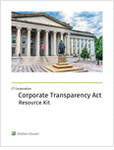For those who practice in the area of enforcement of pharmaceutical patents (i.e., patents directed to compounds, compositions or methods for treatment or prevention of disease, or maintenance of health), 2005 and the first eight months of 2006 are proving to be among the worst in memory. Why? Because in the last 20 months, the U.S. Court of Appeals for the Federal Circuit has completely or partially invalidated or held unenforceable nearly every pharmaceutical patent it has reviewed — more than two dozen in all, with only one upheld.
If one assumes that the survival rate of pharmaceutical patents was higher in years past (which it was — as discussed below), then there are two logical inferences one might draw.
This content has been archived. It is available through our partners, LexisNexis® and Bloomberg Law.
To view this content, please continue to their sites.
Not a Lexis Subscriber?
Subscribe Now
Not a Bloomberg Law Subscriber?
Subscribe Now
LexisNexis® and Bloomberg Law are third party online distributors of the broad collection of current and archived versions of ALM's legal news publications. LexisNexis® and Bloomberg Law customers are able to access and use ALM's content, including content from the National Law Journal, The American Lawyer, Legaltech News, The New York Law Journal, and Corporate Counsel, as well as other sources of legal information.
For questions call 1-877-256-2472 or contact us at [email protected]




